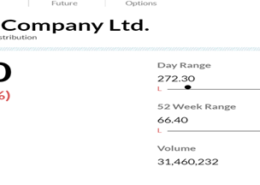Foreign currency reserves, often known as forex reserves, are assets held by the Reserve Bank of India (RBI) to fund imports and defend against external shocks. The reserves are built up over time, with fluctuations caused by the RBI’s market ...Read more
Foreign currency reserves, often known as forex reserves, are assets held by the Reserve Bank of India (RBI) to fund imports and defend against external shocks. The reserves are built up over time, with fluctuations caused by the RBI’s market activities.
According to the Reserve Bank of India, India’s total Forex reserves are around US$604.003 billion on week ended April 8th, 2022, with the Foreign Currency Assets (FCA) component at around US$537.645 billion, Gold Reserves at around US$42.519 billion, SDRs at around US$18.738 billion, and Reserve Position in the IMF at around US$5.101 billion, as per Reserve Bank of India’s (RBI).
Foreign currency assets, gold, special drawing rights (SDRs), and the International Monetary Fund’s (IMF) reserve position are the four components of Forex reserves.
- FOREIGN CURRENCY ASSETS [ FCA ]
FCA is the greatest component of the FX reserve. FCAs are assets that are valued in a currency other than the country’s native currency. Foreign currency assets represented in US dollars include the effect of non-US currency appreciation/depreciation (such as Euro, Sterling, and Yen) held in reserves.
- SPECIAL DRAWING RIGHTS [ SDR’S ]
The SDR is an international reserve asset established by the IMF in 1969 to augment the official reserves of its member countries. The SDR’s value is computed using a weighted basket of major currencies, including the US dollar, euro, Japanese yen, Chinese Yuan, and British pound.
- INTERNATIONAL MONETARY FUND’S (IMF)
A reserve tranche position signifies a portion of the necessary quota of currency that each member country must give to the International Monetary Fund (IMF) that can be used for its own purposes. The reserve tranche is essentially an emergency account that IMF members can access at any moment without having to agree to any restrictions or pay a service charge.
Read less



